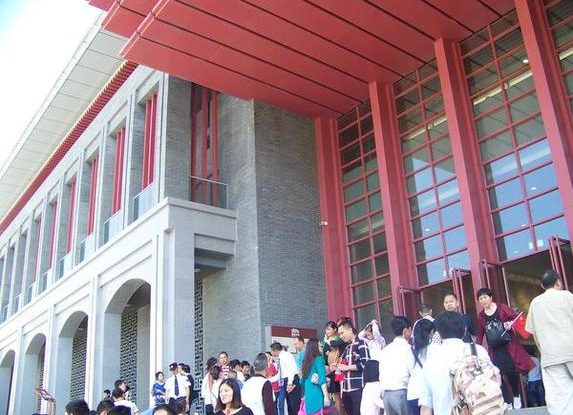An imposing brand new museum in the heart of the “red zone” in the southwestern city of Zunyi has become yet another icon, lionising Mao Zedong as the tallest leader in shaping modern China’s destiny.Yet, on Chinese President Xi Jinping’s watch, a definite focus on the appreciation of Mao — sans the Cultural Revolution that raged through the sixties and the early seventies — falls well short of the revival of China’s foremost leader as a cult figure.
The museum, which opened only last year, is a tribute to famous Zunyi conference, held in a neighbouring building —an elegant blend of western and Chinese architectural styles. For three days between January 15-17, 1935, 18 top leaders of the Communist Party of China (CPC) clashed over the “correct” political line that needed to be pursued by the embattled Reds, who were confronting an existential threat posed by the rival forces of Kuomintang (KMT), led by Chiang Kai-shek. Encircled by the KMT forces and their “warlord” allies in the neighbouring Provinces, the Red Army, in 1934, had begun its arduous Long March. This was an epic 12,000-km trek to break out of the siege, which had being enforced among high mountains and seemingly impassable rivers, over large swathes of territory.
The Zunyi conference had a particularly bloody context. A month earlier, KMT forces inflicted a heavy defeat on the Red Army along the battle of the Xiang river. Forty thousand troops had perished in the clash. In turn, it triggered a strong undercurrent within the party that the tactical errors of Wang Ming — trained by the Russian Bolshevik’s, and Otto Braun, the Moscow-based adviser to the CPC, from the Communist International (Comintern), were responsible for the disaster. Ultimately the Maoist line won the day, leading to Mao’s eventual rise to iconic leadership status.
At the museum, Mao is the focal point, but the curators, under obvious political direction, have ensured that his prominent presence does not overwhelm other members of the new leadership team that emerged out of the Zunyi conference. Several exhibits showcase Zhou Enlai, the first Prime Minister of the People’s Republic of China (PRC), as well as Deng Xiaoping, the architect of post-Mao reforms. Famed photos of others, including Liu Shaoqi, who fell from grace, and died in prison during the Cultural Revolution are also well displayed. The CPC formally rehabilitated Liu in 1980.
Despite the ups and downs of the Mao-era, young people at the museum appeared unwilling to find serious fault by the former Chairman. “It is said that Mao made some mistakes, but tell me who does not make mistakes. Look at the achievements of the Long March under Mao,” says Su Xiao Chun, a 14-year-old science student from a local school.
Su Yun, a father of two who was also at the museum said he had brought his children to the site so that “they understand our history”.
“After all the Zunyi conference decided the future of China,” he observed.
An hour’s drive from Zunyi, another mammoth museum is emerging in the cusp of the Daloshan Mountains, signalling the government’s drive to connect young Chinese with their Red roots. The new museum will commemorate the Red Army’s famous victory over KMT troops at the Loushan Pass, fought in the aftermath of the Zunyi conference. The morale boosting victory at the Loushan triggered a hasty southward retreat by the KMT forces to the Wujiang river, opening another chapter of the meandering Long March story.
President Xi’s encouragement to “Red Tourism”, as a wellspring of soft power, is not an entirely novel exercise. In fact, the term was first officially coined in 2004, when the government issued its ‘National Red Tourism Development Planning 2004-2010’ strategy, during the 55th anniversary of the PRC. Yet, it has acquired fresh resonance as it has conflated with President Xi’s credible and popular crackdown on corruption, and other reforms, which have not even spared the military. Some analysts say that jury is now out on whether the President will accomplish the difficult task of combining China’s economic rise with socio-political renewal, anchored in the best traditions of the country’s revolutionary past.


Leave a comment